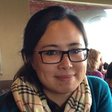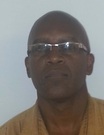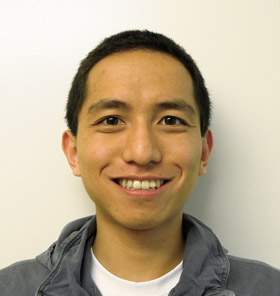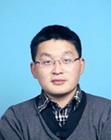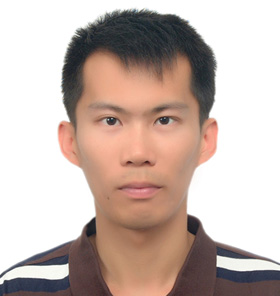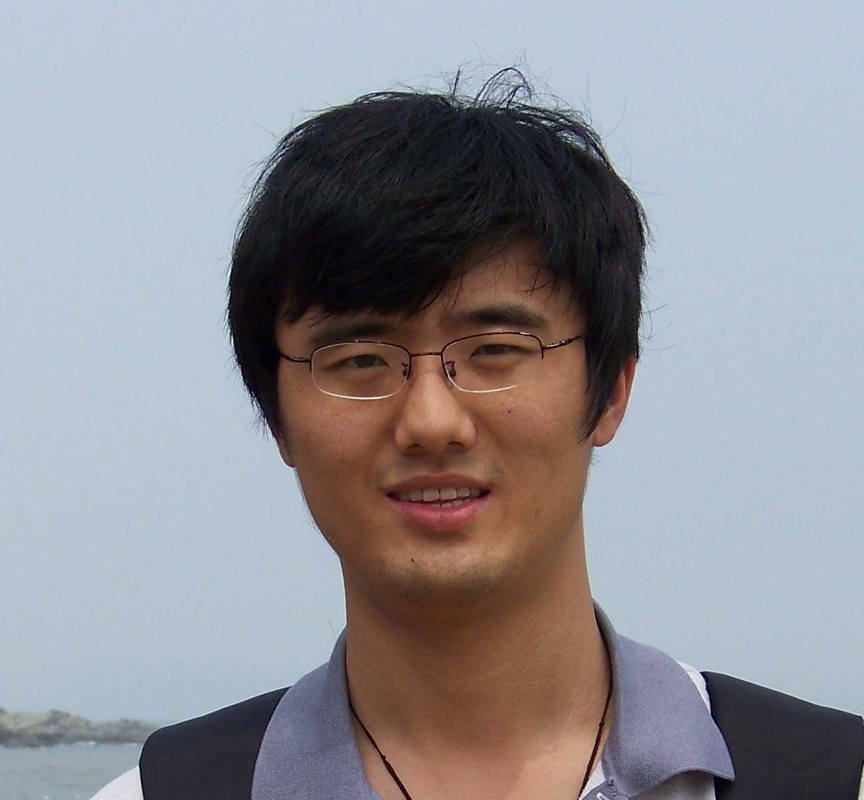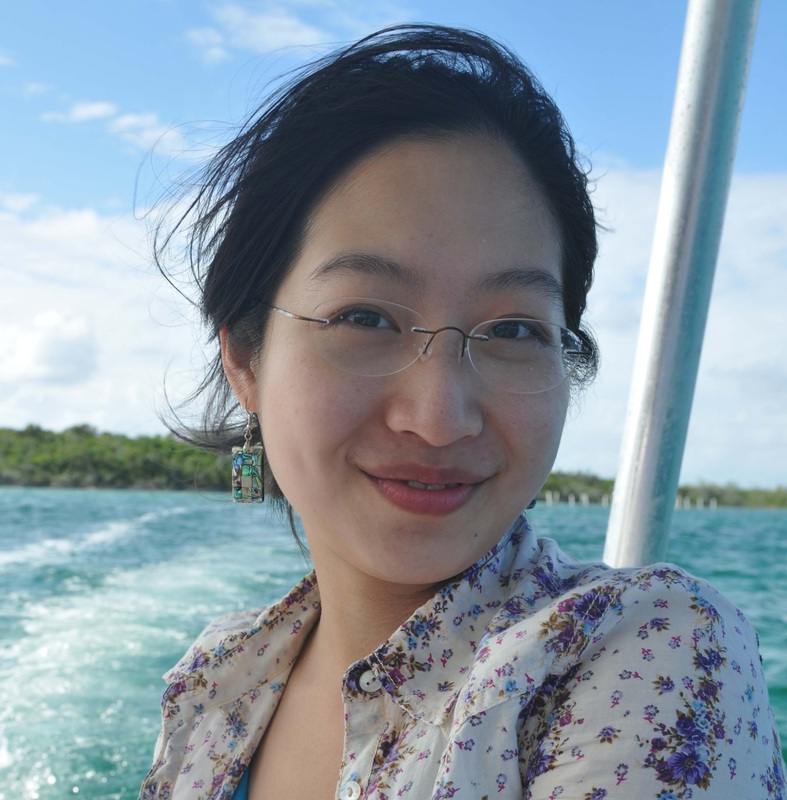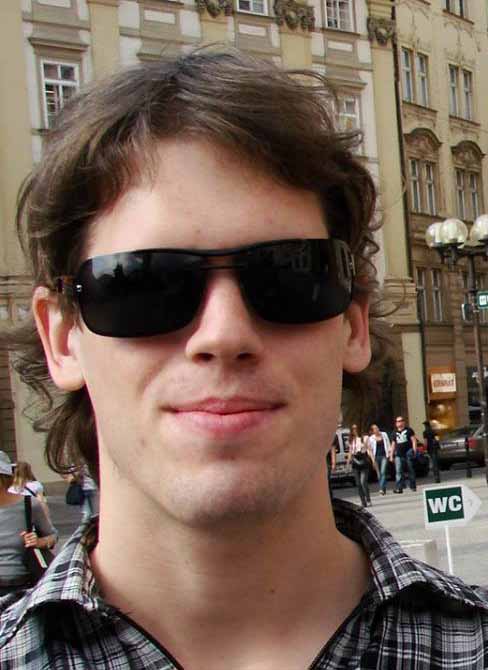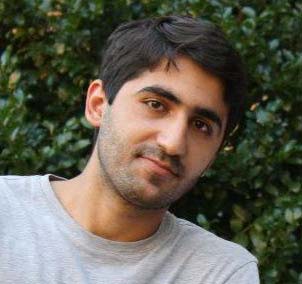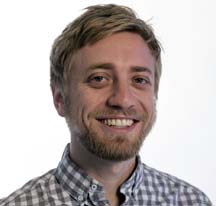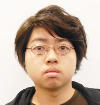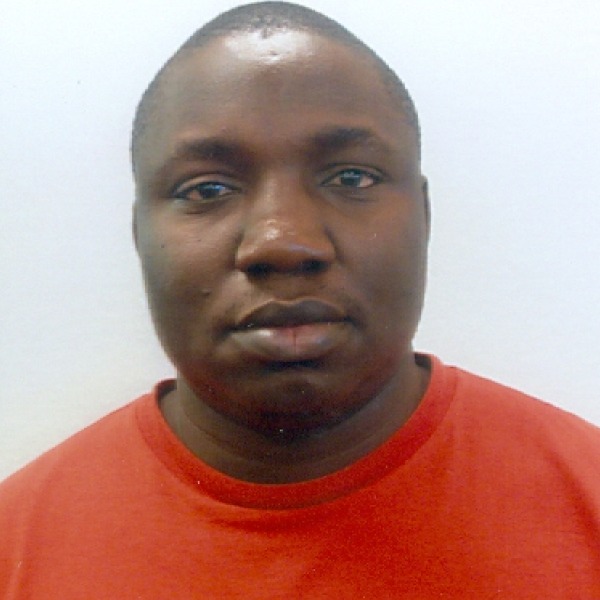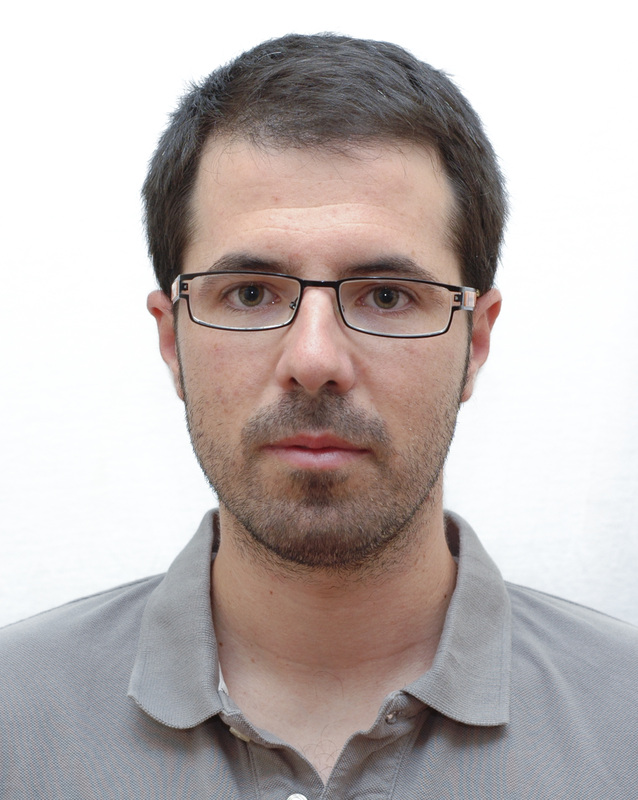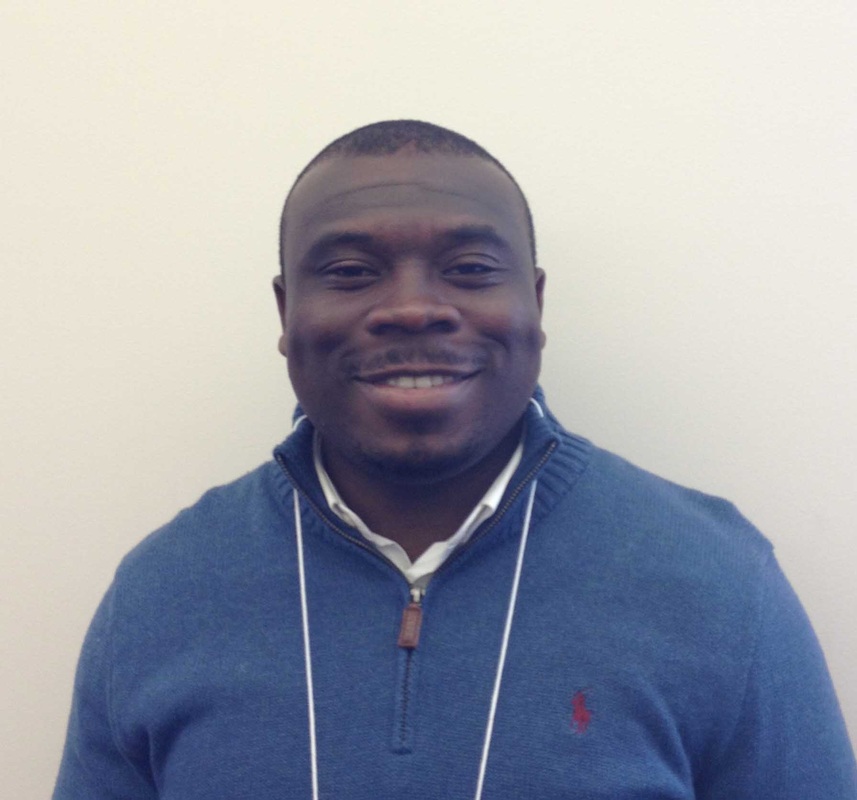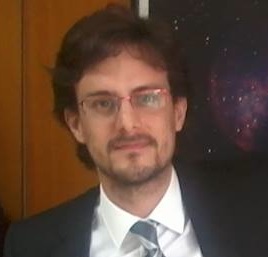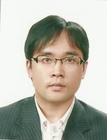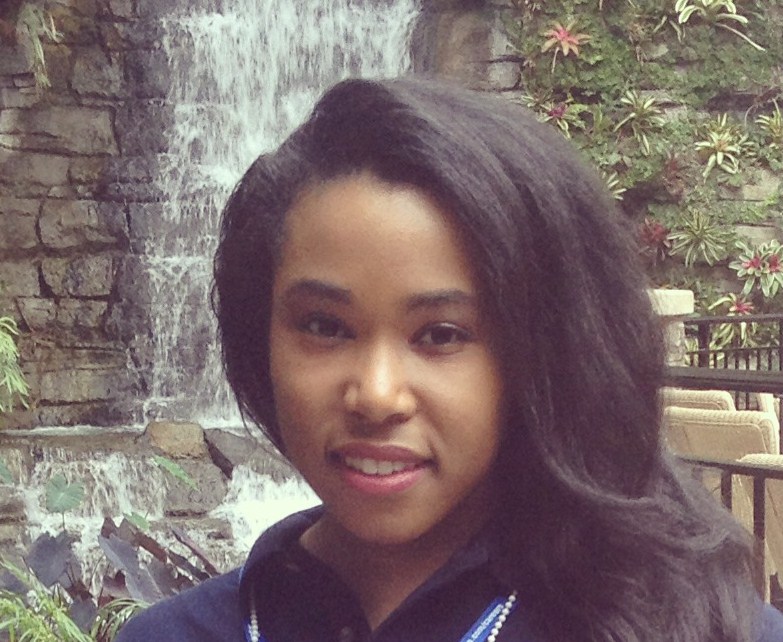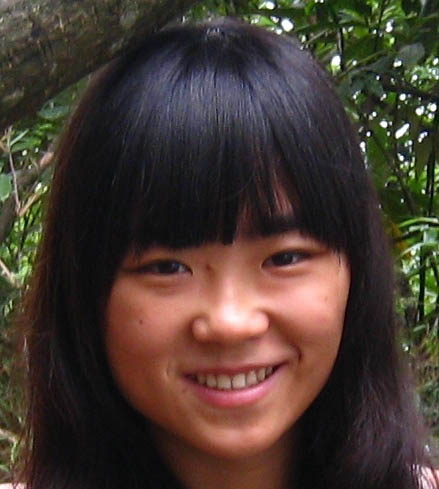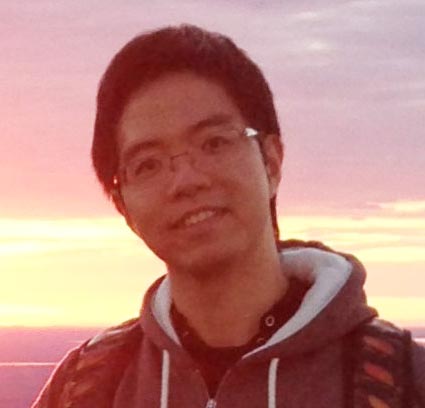2014 Annual Meeting Micro-Presentation Abstracts
10:30-11:15 am
Micro-Presentations 1: NV Center Diamond
10:30-11:15 am
Micro-Presentations 1: NV Center Diamond
|
Nathalie de Leon
Postdoctoral Fellow Quantum Optics in the Solid State with Diamond Nanophotonics Nathalie P. de Leon, Ruffin E. Evans, Kristiaan De Greve, Alex A. High, Matthew Markham, Alastair Stacey, Daniel Twitchen, Marko Loncar, Hongkun Park, and Mikhail Lukin Large-scale quantum networks will require efficient interfaces between photons and stationary quantum bits. Nitrogen-vacancy (NV) centers in diamond are a promising candidate for quantum information processing. They act as artificial atoms in the solid state that can be addressed optically, exhibit spin-dependent fluorescence, and can have transform-limited linewidths at the zero phonon line (ZPL). We have coupled NV centers in bulk diamond to photonic crystals and waveguides, with the goal of enhancing emission into the ZPL and realizing the high cooperativity regime for applications such as entanglement of distant NV centers, quantum networks and single photon transistors. Delroy Green
Graduate Student Boron Doped Diamond for Superconductivity Delroy Green, Gary L. Harris Diamond is the hardest known naturally occurring material. It is extremely strong due to the structure of its carbon atoms, where each carbon atom has four neighboring atoms joined to it by covalent bonds. Although diamond is hard, its toughness (the ability to resist breakage) when compared to most engineering materials, is poor. However, diamond, because of its hardness, is an efficient cutting and drilling tool. Diamond is a good insulator but shows semiconducting properties when doped with impurities. When Diamond is heavily doped with boron the resulting material becomes a p-type charged carrier. If excess boron doping is achieved then it becomes superconductor. In our experiment a series of boron-doped diamond films are grown by hot filament chemical vapor deposition to test the superconductivity of the material. Various processing parameters are optimized for diamond quality, structures, morphology, and doping. In this study we will conduct a combined analysis of scanning electron microscope, Raman mapping and Hall measurements at various temperature conditions to ascertain the superconductive nature of the material. Bokani Mtengi
Graduate Student Heteroepitaxial Growth and Characterization of Diamond Films by Hot Filament Chemical Vapor Depotion Bokani Mtengi, Gary L. Harris, James Griffin Diamond thin films are of interest for the many existing and potential technological applications such as in electronic, medical and mechanical devices. Most of the research opportunities are directed towards the understanding and optimization of diamond synthesis by chemical vapor deposition. Due to its favorable properties, extreme hardness, wide band gap and highest thermal conductivity, chemically inert, diamond is expected to be an excellent material for various device applications. In this work we investigate the effects of growth parameters on diamond properties synthesized by hot filament chemical vapor deposition method on nanodiamond seeded silicon and silicon carbide substrates. Hot filament chemical vapor deposition allows for optimization and repeatable uniform growth processes for diamond. The experimental parameters; the methane and hydrogen gas flow rates and ratios, growth distance, growth temperature, filament temperature, doping for nitrogen vacancy centers, growth time and process pressures were varied to optimize diamond film growth. We report successful growth of polycrystalline diamond as confirmed by scanning electron microscopy micrographs and Raman spectroscopy peak at 1332.8cm-1. In-situ growth process was monitored using the laser reflectance interferometer and the growth rate was found to be 2.4μm/hr. Nitrogen vacancies were successfully created by addition of nitrogen gas towards the end of growth. The average roughness of the diamond films is 250nm with grain sizes as low as 4μm. Young-Ik Sohn
Graduate Student Dyanmic Actuation of Single Crystal Diamond Nanomechanical Resonator Young-Ik Sohn, Michael J. Burek, Marko Loncar We demonstrate dynamic actuation of single crystal diamond nanobeams in the very high frequency regime for the first time. Applying dielectrophoretic transduction, actuation can be achieved without compromising diamond’s superior optical and mechanical properties. Jordan Stroman Graduate Student Constructing a Confocal Microscope to Image Nitrogen Vacancy Centers Jordan Stroman, Gary L. Harris CIQM envisions that atomic memory will be achieved using nitrogen vacancy centers (NV). Howard University is optimizing the process of creating nitrogen vacancy centers using hot filament chemical vapor deposition (HFCVD). In order to provide reliable feedback concerning the presence, concentration, and orientation of these color centers, an optical system capable of performing confocal laser scanning fluorescence microscopy is being constructed. This system consists of a 200mw laser that emits light with a wavelength of 532nm. It utilizes a piezoelectric stage with a resolution of 20nm in the x, y and z direction. When completed this optical system will be able to confirm and locate NV centers with a resolution of ~ 200nm. Xingyu Zhang
Graduate Student Patterned Growth Of Photonic Nanostructures From Single-Crystal Diamond Xingyu Zhang, Evelyn Hu Negatively-charged nitrogen vacancy centers (NV) in diamond have diverse applications in quantum information processing and sensing. Optical cavities created from single-crystal diamond provide emission enhancement and improve light collection efficiency from NVs. However, most existing techniques for fabricating these structures require top-down processing (e.g. ion implantation, reactive ion etching). These methods can damage the diamond host lattice, which degrades the NV spin and spectral properties, and are challenging for deterministic positioning of NVs. We have designed a nanopillar-based photonic crystal cavity and explored patterned growth to create nanostructures directly from single-crystal diamond. Using chemical vapor deposition with a lithographically-defined mask, we have successfully grown low-aspect ratio diamond nanopillars. Initial characterization shows narrow Raman linewidths and bright luminescence from NVs and silicon vacancy centers in the grown structures. 11:15-12:00 pm
Micro-Presentations 2: Topological Insulators Cui-Zu Chang Postdoctoral Fellow Carrier-Independent Ferromagnetism and Giant Anomalous Hall Effect in Vanadium Doped Topological Insulator Chang, Cui-Zu; Zhao, Wei-Wei ; Chan, Moses H. W. ; Moodera, Jagadeesh S. Quantum anomalous Hall effect (QAHE), a quantized version of AHE has been theoretically predicted[1] and experimentally observed [2] in thin films of Cr doped (Bi,Sb)2Te3, a topological insulator (TI). The observation of QAHE in Cr doped TIs usually requires external magnetic field to align magnetic domains before entering into QAH state, and also that these systems have low coercivity (~0.1T). Here we report our findings on a highly promising TI system that enables effective tuning of chemical and electronic properties; the vanadium (V) doped ferromagnetic TI thin films. By molecular beam epitaxial growth and V doping, we have realized both n-type and p-type conductivity in 6nm (BixSb1-x)2Te3 thin films. Remarkably, V doped TI films show strong ferromagnetic behavior with giant coercivity (up to ~1.3T) and high Curie temperatures (up to ~160K). Notable in this case is that the ferromagnetic behavior was found to be independent of the type and concentration of carriers. Moreover, the anomalous Hall effect was observed to be significantly enhanced at low carrier concentration regime, with the anomalous Hall angle reaching an unusually large value of 0.2. It indicates when the carries changes from n- to p-type (lowest carrier density), bulk contribution to conduction reduces and the surface contribution begins to dominate. These findings demonstrate that V doped topological insulators provide a new platform for TI based spintronic development. Shiang Fang Graduate Student Theoretical Studies for Bismuth-Antimony Alloy Shiang Fang, Bertrand I. Halperin, Efthimios Kaxiras In history, bismuth has been used to developed experimental condensed matter Fermi-surface tools. Recently, theoretical progress in topological insulator sheds new light on the application with bismuth nanowires and bismuth-antimony alloy. In our work, we construct the simplified tight-binding models from accurate density functional theory calculation to study the real material property. Timothy Hsieh Graduate Student Topological Crystalline Insulators Timothy Hsieh, Junwei Liu, Hsin Lin, Jagadeesh Moodera, Peng Wei, Wenhui Duan, Liang Fu Topological crystalline insulators (TCI) are materials in which crystal symmetries ensure the existence of metallic states on the boundary. I will talk about our prediction of TCIs in the SnTe and anti-perovskite materials classes. Junwei Lui Postdoctoral Fellow Quantum Spin Hall Effect and Topological Field Effect Transistor in Two-Dimensional Transition Metal Dichalcogenides Xiaofeng Qian, Junwei Liu, Liang Fu and Ju Li We predict a new class of large-gap quantum spin Hall insulators in two-dimensional transition metal dichalcogenides with 1T’ structure, namely, 1T’-MX2 with M=(Mo, W) and X=(S, Se, and Te) by first-principles calculations. The structural distortion causes an intrinsic band inversion between chalcogenide-p and metal-d bands, and spin-orbit coupling opens a gap at finite momentum, which is highly tunable by vertical electric field. This motivates us to propose a topological field effect transistor made of these atomic-layer van der Waals heterostructures with multiple topologically protected transport channels, which can be rapidly switched off by electric field through topological phase transition instead of carrier depletion. Hechen Ren Graduate Student Induced Superconductivity in Topological Insulators Hechen Ren, Sean Hart, Timo Wagner, Philipp Leubner, Mathias Muehlbauer, Christoph Bruene, Hartmut, Laurens Molenkamp, Amir Yacoby Combining two-dimensional topological insulators with superconductivity can provide us a platform to observe and manipulate localized Majorana fermions. In the context of condensed matter, these are emergent electronic states that obey non-Abelian statistics and can serve as the basis for topological quantum computing. Our experiment has demonstrated promising evidences towards the realization of such states. Oles Shtanko Graduate Student Phases of Fractional Quantum Hall Effect Oles Shtanko, Leonid Levitov Fractional Quantum Hall Effect (FQHE) is a window into the world of topological states. Observed firstly at 1982, this phenomena is still a subject of extensive study. There are few reasons for this. The first is possibility of experimental observations. The second is well defined approaches which let us see deeply into physics of topological states. Combinations of these two facts make FQHE a test field for general ideas and theories related to theory of fractional statistics and non-Abelian particles. I will show how these ideas work in reality and their relation to physics of quantum phases. 1:30-3:00 pm Micro-Presentations 3: Graphene Ahmet Demir Graduate Student Capacitance Measurements on Transition Metal Dichalcogenides Ahmet Demir, Raymond Ashoori Transition metal dichalcogenides (TMDCs) are layered materials with tunable direct bandgap structure. This feature allows to be open to a variety of applications and rich physics. We aim to understand the physics of these materials using capacitance measurements. Alex Frenzel Graduate Student Semiconducting-to-metallic Photoconductivity Crossover in Graphene A. J. Frenzel, C. H. Lui, Y. C. Shin, J. Kong, and N. Gedik We investigate the transient photoconductivity of graphene at various gate-tuned carrier densities by optical-pump terahertz-probe spectroscopy. We demonstrate that graphene exhibits semiconducting positive photoconductivity near zero carrier density, which crosses over to metallic negative photo- conductivity at high carrier density. These observations can be accounted for by the interplay between photoinduced changes of both the Drude weight and carrier scattering rate. Our findings provide a complete picture to explain the opposite photoconductivity behavior reported in (undoped) graphene grown epitaxially and (doped) graphene grown by chemical vapor deposition. Andrew Lin Undergraduate Student Graphene-on-Boron Nitride Sample Fabrication Andrew Lin, Robert M. Westervelt During the summer of 2014, work in the Westervelt lab has continued on the development of high-quality graphene-on-boron-nitride (G-BN) samples for capacitance measurements. Graphene deposited via epitaxy on special mounting points is in turn layered on boron nitride deposited on silicon via epitaxy. Through the use of flip-chip bonding followed by lithography/evaporation of leads onto graphene on boron nitride, the lab is attempting to observe high-mobility samples for use in our experiments, an ongoing process which promises viable results for use in sample fabrication. Sidi Maiga Graduate Student Physical Adsorption of Molecules on a Monolayer Graphene Sheet Sidi Maiga, Silvina Gatica We present results of Grand Canonical Monte Carlo simulations of adsorption of Kr, Ar Xe and CO2 on a monolayer graphene sheet. We compute the adsorbate-adsorbate interaction by a Lennard Jones potential. We adopt a hybrid model for the graphene-adsorbate force; in the hybrid model, the potential interaction with the nearest carbon atoms (within a distance rnn) is computed with an atomistic pair potential Ua; for the atoms at r>rnn, we compute the interaction energy as a continuous integration over a carbon uniform sheet with the density of graphene. For the atomistic potential Ua, we assume the anisotropic LJ potential adapted from the graphite-He interaction proposed by Cole et.al. This interaction includes the anisotropy of the C atoms on graphene, which originates in the anisotropic Ï€-bonds. The adsorption isotherms, energy and structure of the layer are obtained and compared with experimental results. Efren Navarro-Moratalla Postdoctoral Fellow Electric Double Layer Gating of Transition Metal Dichalcogenides Efren Navarro-Moratalla, Hugh Churchill, Yafang Yang, Pablo Jarillo-Herrero Charge carrier control is a keystone in the electronic technologies of semiconducting materials. Conventional transistor techniques (ie. gating through a solid-state dielectric barrier) have permitted the modulation of the electrical transport across 2D crystals, giving rise to the observation of a variety of new physical phenomena. However, this type of electrical field has been found to allow for maximum carrier densities of around 1013 cm-2. The use of ionic liquids as gating electrodes gives rise to the formation of high capacitance electrical double layers (EDLs) that permit exploring much higher carrier density regimes (up to ca. 10^15 cm-2), opening the door for the study of field-induced correlated states, such as ferromagnetism or superconductivity. Though reported experiments have failed to show direct evidence of superconducting behaviour in exfoliated graphene, pioneering works on transition metal dichalcogenides have provided with direct proof of the use of EDLs for the induction of superconductivity in the surface of bulk crystals (for instance ZnS2), or in the surface of thick flakes (such as in MoS2 or in ZrNCl). And yet, no reports of single layer superconducitivty have been put forward. Herein we take advantage of the EDL approach, the wide range of tuneable-band-gap semiconducting transition metal dichalcogenide and the van der Waals heterostructure technique to fabricate high quality ultraflat samples that will permit exploring the high carrier density regime in search for switchable single layer superconductivity. The use of a liquid gate also opens the possibility of studying the effect of strain or even the presence of molecular species (sensing) may have in the superconducting state. Raymond Otchere-Adjei Graduate Student Selective N-Type and P-Type Doping of Graphene with Functionalized Gold Nanoparticles and Electron Acceptor Molecules Raymond Otchere-Adjei, Charles M. Hosten Spatially selective doping of graphene with photoreactive groups, such as electron-rich metal nanoparticles, has potential applications in the fabrication of integrated devices. The effect of diffusion rate, nature of the metal ion, and the catalytic reduction of the metal ions on the properties of the resulting hybrid graphene materials will be probed by Raman spectroscopy, surface-enhanced Raman Scattering Spectroscopy (SERS) and tip-enhanced Raman scattering spectroscopy (TERS). Borja Peropadre Postdoctoral Fellow Charge Extraction from Graphene with Adsorbed Charge-Transfer Organic Molecules Borja Peropadre, P. Jarillo-Herro, A. Aspuru-Guzik In this talk, I will focus on the potential of harvesting charge transfer excitons from a graphene monolayer. As an isolated material, graphene behaves as a gapless semiconductor, limiting its potential applications in future electronic devices. We circumvent this problem by chemically doping the graphene monolayer with flat organic molecules, such as perylenes and their derivatives. The planar nature of conjugated organic molecules will facilitate large electronic coupling and therefore allow for the efficient extraction of hot-carrier excitations in a time much faster than the typical exciton relaxation rate. An immediate application of this research project would be the fabrication and characterization of graphene-based photovoltaic devices which could eventually beat the Shockley-Queisser limit. Yong Cheol Shin Graduate Student The Effects of the Transfer Process on the Quality of CVD Graphene Yong Cheol Shin, Roman Caudillo, Alan Logan, Mildred Dresselhaus, and Jing Kong Currently, large-area monolayer graphene can be obtained via chemical vapor deposition using Cu foil as a growth substrate. Afterwards, the graphene needs to be transferred off from the Cu substrate in order to be used in most applications. However, the transfer process quite often unavoidably affects the properties of graphene, such as causing doping or introducing defects. It is very important to minimize such effects as much as possible for further applications. In order to do this, a clear understanding on the effects from the transfer process, ideally de-convoluted from the result of CVD growth is desirable. In this work, we investigated the effects of substrate treatment, cleaning process and graphene top surface passivation, using mechanically exfoliated graphene as a comparison. Amber Wingfield Graduate Student Heteroepitaxial Growth of Graphene by Way of Copper Initialization Amber Wingfield, Gary L. Harris, James Griffin Graphene is the formation of carbon atoms into a sheet like structure that is one atomic layer thick. Previous research has shown that graphene’s high electron mobility, flexibility, and transparency makes it a perfect candidate to bring semiconductor technology and the electronic device industries into a new age. A current and reliable method to acquiring graphene is through epitaxial growth on top of transition metals, such as copper and nickel, by way of chemical vapor deposition (CVD). However, in order to use this graphene on other substrates, a tedious and at times imperfect transfer process must take place. In efforts to improve the overall epitaxial growth method of graphene, the concept of forming this material directly onto a desired substrate (e.g. silicon or silicon dioxide) is explored. The constructed process will incorporate the use of a copper rich environment as a catalyst, to promote the nucleation of graphene on the non-metallic substrate. The end result is in hopes of eliminating the transfer process and is sought to fall within the current techniques and procedures of silicon technology. Kitty Yeung Graduate Student Far-Infrared Graphene Plasmonic Crystals for Plasmonic Band Engineering Kitty Yeung, Donhee Ham Plasmons in graphene have been an attractive feature due to sub-wavelength confinement and tunability. A useful method to excite graphene plasmons is to pattern a graphene sheet into specific shapes, which allow phase matching between the plasmon modes and the incident radiation. Earlier efforts have relied on exciting localized plasmons in isolated graphene islands, such as ribbons, disks and rings. The geometry and dimensions of the islands determine the boundary conditions that define the localized plasmonic resonance frequency. An additional mechanism to control the localized plasmonic resonance frequency is to use electrostatic coupling between proximate islands, suggesting a principle of engineering wave dynamics via medium periodicity. We apply this principle in the presented work. In contrast to previous work, we introduce graphene plasmonic crystals in which delocalized plasmons are excited in a continuous graphene medium with a periodic structural perturbation, creating plasmonic bands in a manner akin to photonic crystals. Fourier transform infrared spectroscopy is used to demonstrate the plasmonic band formation. By measuring the extinction spectra of the graphene plasmonic crystals, we show that the incident far-infrared light resonantly couples to plasmonic modes that belong to a specific set of plasmonic bands. These specific bands are selected because their spatial symmetry, interpreted via group theory, matches that of the free-space radiation field. Adjusting the periodic geometry thus allows manipulation of the plasmonic bands. Further tuning of the plasmonic band frequencies is achieved by chemically doping charge carriers with HNO3 vapor. Our work is a step toward graphene plasmonic band engineering, which may lead a new class of sub-wavelength graphene plasmonic devices, such as band gap filters, modulators, switches and metamaterials. Lili Yu Graduate Student High-performance WSe2 CMOS Devices and Integrated Circuits Lili Yu, Ahmad Zubair, Tomas Palacios Two-dimensional (2D) crystals, including graphene, hexagonal boron nitride and transition metal dichalcogenides (TMD) materials, have outstanding properties for developing the next generation of electronic devices because of the excellent electrostatic control of the channel associated to their atomically thin structure. In addition, their mechanical strength and transparency makes them excellent candidates for transparent flexible electronics. For many of these applications, the realization of complementary metal-oxide-semiconductor (CMOS) logic is crucial to get high performance integrated circuits. CMOS logic has high noise immunity, low static power consumption and high density of integration. So far, complementary logic circuits have only been demonstrated on heterostructures of different layered materials with gain less than 2 and zero noise margin[1], [2]. In this work, we demonstrate both pMOS and nMOS technologies on exfoliated WSe2, and we use them to fabricate monolithic CMOS integrated logic inverters with rail-to-rail logic operation, small power dissipation, large noise margin and voltage gain. Yuan Yang Graduate Student On-the-fly Raman Spectrum Calculation Yuan Yang, Eric Heller Raman Spectroscopy is widely used to study the vibrational, rotational and other low-frequency excitations in a system. We are trying to improve the semiclassical method by using data from first-principle computations to calculate the Raman Spectroscopy of molecular systems. |

